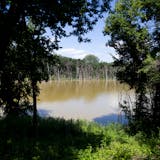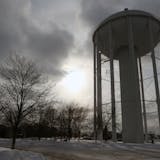The public may one day have better access to the roaring St. Anthony Falls, the birthplace of Minneapolis, depending on the outcome of a study by federal officials.
The U.S. Army Corps of Engineers will hold the first of two public meetings Tuesday to explain and take input about a study on what to do with its Upper St. Anthony Falls Lock and Dam property adjacent to the falls' signature spillway. Congress closed the lock to navigation in 2014 in an effort to stop invasive carp from reaching farther upstream, but it is still used occasionally to minimize flooding.
City officials have thrown their support behind a plan to transform the space into a visitor center with riverfront dining, boat access, underground parking and event space. Other ideas for the area include a long-standing effort to install a new hydroelectric facility.
The Army Corps was previously studying what to do with all three lock-and-dam facilities upstream of St. Paul, including the Ford dam and the one at Lower St. Anthony Falls. But Congress directed them in 2018 to focus on the Upper St. Anthony Falls site first.
"There are probably more people that are interested in the future at Upper St. Anthony Falls. It's more visible," said Nanette Bischoff, project manager with the Army Corps.
Bischoff said the study will weigh the pros and cons of each use of the site, including how large a presence — if any — the Army Corps should maintain there. It is unlikely the dam would be removed, for example, because it helps keep water levels high enough for the city of Minneapolis to draw drinking water into its treatment plants. The Corps could also maintain aspects of the site needed to minimize flooding.
The study is expected to wrap up in late spring 2020, and Congress will make the final decision about how to proceed.
The public can offer thoughts Tuesday at 6 p.m. at the meeting in Mill City Museum, or Aug. 19 at Michael Dowling School in south Minneapolis.


